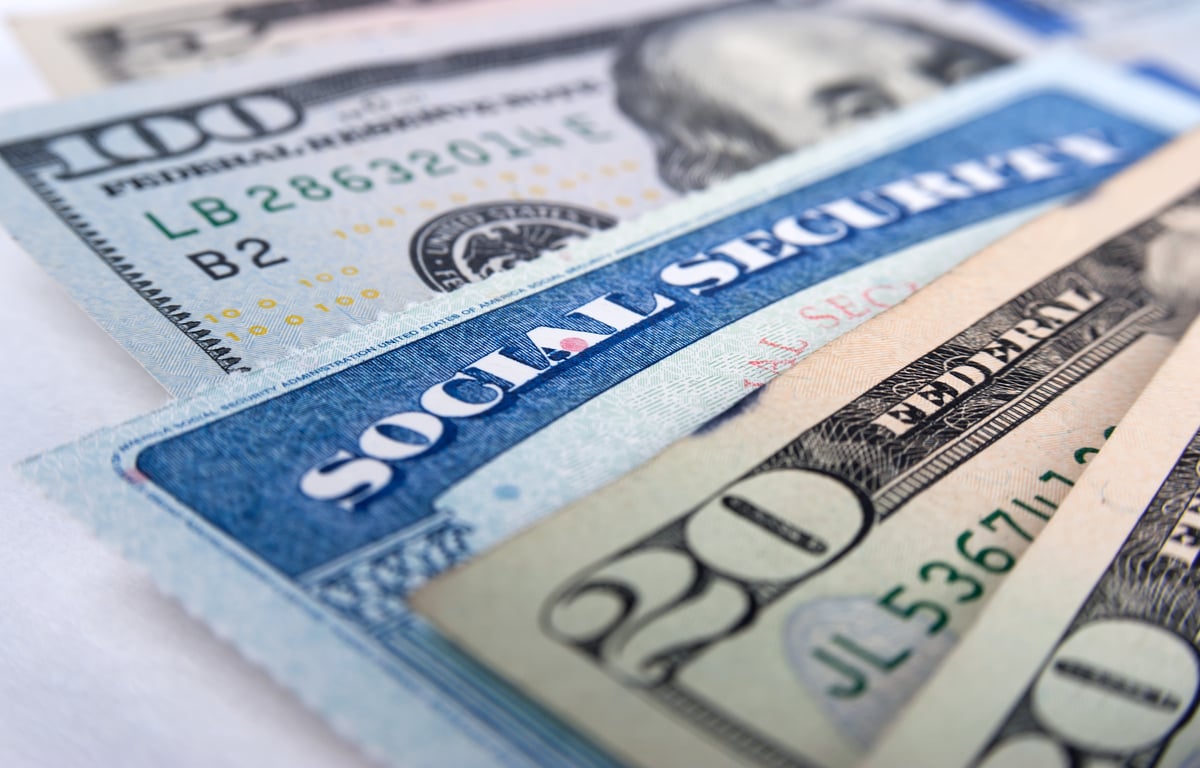There's no question that this has been an unpredictable and unforgettable year. The coronavirus disease 2019 (COVID-19) pandemic has completely transformed societal habits, cost more than 190,000 American lives, and upended the longest economic expansion in U.S. history, dating back to when record-keeping began roughly 160 years ago.
But it's important not to lose sight of the fact that it's also an election year. Up for grabs are all 435 seats in the House of Representatives, a third of the seats in the Senate, and the big chair in the White House.

Image source: Getty Images.
Although coronavirus-related response and economic growth initiatives are bound to take the spotlight in the presidential race between Democratic Party challenger Joe Biden and incumbent Republican Donald Trump, it's Social Security policy that could well be a key issue this election.
As a quick refresher, the Social Security program is facing an estimated funding obligation shortfall of almost $17 trillion. Though the program's existence isn't in question, the projected depletion of its asset reserves (i.e., its net cash surpluses built up since inception) could result in sweeping benefit cuts for retired workers of up to 24% by 2035. With Social Security's Judgment Day closing in, it's going to be up to the president, whether that will be Donald Trump or Joe Biden, to tackle the shortcomings of our nation's top social program.
The big question is, what can we expect from the candidates in terms of policy and based on their track records when it comes to Social Security? Let's take an in-depth look at the challenger, Joe Biden.

Joe Biden speaking with reporters. Image source: Official White House Photo by Sharon Farmer.
Joe Biden on Social Security
The former vice president brings lots of ideas to the table that align with the core ideals of his party. However, Biden's past views on Social Security feature instances where he's come across as more of a centrist.
Biden's views from the past
As an example, when Joe Biden was competing against Barack Obama for the Democratic nomination in 2008, the now-former vice president suggested that a wide gamut of options should be on the table to strengthen Social Security. This included raising the earnings cap associated with the payroll tax and gradually increasing the full retirement age -- i.e., the age at which a worker becomes eligible to receive 100% of their monthly payout, as determined by their birth year. Since gradually raising the full retirement age would effectively reduce lifetime outlays for future generations of workers, Biden's willingness to consider this as a solution is rare for a Democrat.
Joe Biden was also the leading figure behind the payroll tax holiday that plumped up workers' paychecks under the Obama administration in 2011 and 2012, but ultimately put the Social Security program on worse financial footing. The temporary reduction in payroll tax on working Americans was designed to spur economic growth following the Great Recession. But because the 12.4% payroll tax on earned income is Social Security's primary source of income, it resulted in the program missing out on over $110 billion in payroll tax revenue (in aggregate) over a two-year stretch. However, it should be noted that money was transferred from the General Fund so as not to deplete Social Security's two trust funds.

Image source: Getty Images.
Here's Joe Biden's plan
Though Biden has, on rare occasion, favored Social Security ideas that typically wouldn't be associated by Democrats, he does have a party-line plan as to how he'll tackle Social Security's imminent cash shortfall if he's elected in November. The Democratic challenger's four-pronged plan is as follows:
- Increase payroll taxation on high earners: At the heart of the Democrats' Social Security fix and also Biden's plan is the creation of a doughnut hole that would allow the 12.4% payroll tax to be reapplied to high earners. In 2020, all earned income (wages and salary) above $137,700 is exempt from the payroll tax. Under Biden's plan, earned income between this payroll tax cap and $400,000 would remain exempt, while earnings above $400,000 would be subject to the payroll tax.
- Boost the special minimum benefit: With the understanding that Social Security is first and foremost designed to provide a financial foundation for low-income retirees, Biden's plan aims to boost special minimum monthly benefits to 125% of the federal poverty line for low-income workers with 10 to 30 years of work history.
- Increase payouts for long-lived recipients: As people age, their out-of-pocket costs for healthcare and transportation services can soar. Under Biden's plan, beneficiaries between the ages of 78 and 82 would see their primary insurance amount rise by 1% annually until it reached a full 5% increase. This would provide aged beneficiaries with a modest benefit increase.
- Switch from the CPI-W to the CPI-E: Lastly, Biden would see to it that the existing inflationary tether, the Consumer Price Index for Urban Wage Earners and Clerical Workers (CPI-W), is replaced by the Consumer Price Index for the Elderly (CPI-E). Without getting too far into the weeds, the CPI-W does a poor job of tracking the spending habits of seniors, which means cost-of-living adjustments (COLA) tend to be understated. By switching to the CPI-E, the expenditures of seniors, who make up the majority of beneficiaries, would gain more prominence.

Image source: Getty Images.
What works with Biden's plan? What doesn't?
The big question is, would Biden's Social Security plan work?
In some respects, it would absolutely strengthen Social Security. Reinstating the payroll tax on earned income above $400,000 would provide an immediate boost in revenue collection for the program and potentially push its asset-reserve depletion date out decades.
Furthermore, switching to the CPI-E would yield higher average annual COLAs, presumably lessening the loss of purchasing power that Social Security beneficiaries have been experiencing. Since 2000, retirees have seen the purchasing power of Social Security income fall 30%, according to an analysis by The Senior Citizens League.
However, Biden's plan isn't perfect. For instance, it fails to account for a number of ongoing demographic trends, such as record-low birth rates, falling net legal immigration, and growing income inequality. These factors will continue to pressure the program, to the point where additional measures will almost certainly be necessary to shore up Social Security beyond just taxing the rich.
Additionally, the CPI-E is viewed by the U.S. Bureau of Labor Statistics as an experimental inflationary measure, which implies that it would need refining. The CPI-E also fails to account for certain expenditures (e.g., Medicare costs), suggesting that there would still be a loss of purchasing power that seniors would be contending with.
Still, with Joe Biden previously willing to entertain ideas from his party's opposition, the possibility of a bipartisan solution remains on the table if he wins the November election.





